-
Notifications
You must be signed in to change notification settings - Fork 0
Launching TxBR via AWS CloudFormation
This page describes steps to run TxBR via an AWS EC2 instance via CloudFormation.
WARNING: Running the CloudFormation stack described below will result in EC2 charges ($0.9-$3 per hour runtime)
- AWS account
- Ability to launch m5 or c5 instances. To check click here.
- A ssh client
- Import or create AWS key pair used to connect to instance via ssh.
Click the Launch Stack icon below to launch the TxBR CloudFormation template which will spin up 1 EC2 instance (~10 minutes to bootup):
Link below will launch in Oregon Region:
WARNING: Running the above CloudFormation stack will result in EC2 charges
Clicking the Launch Stack icon above will open a new window in the browser as seen below.
Click the Next button circled in red below.
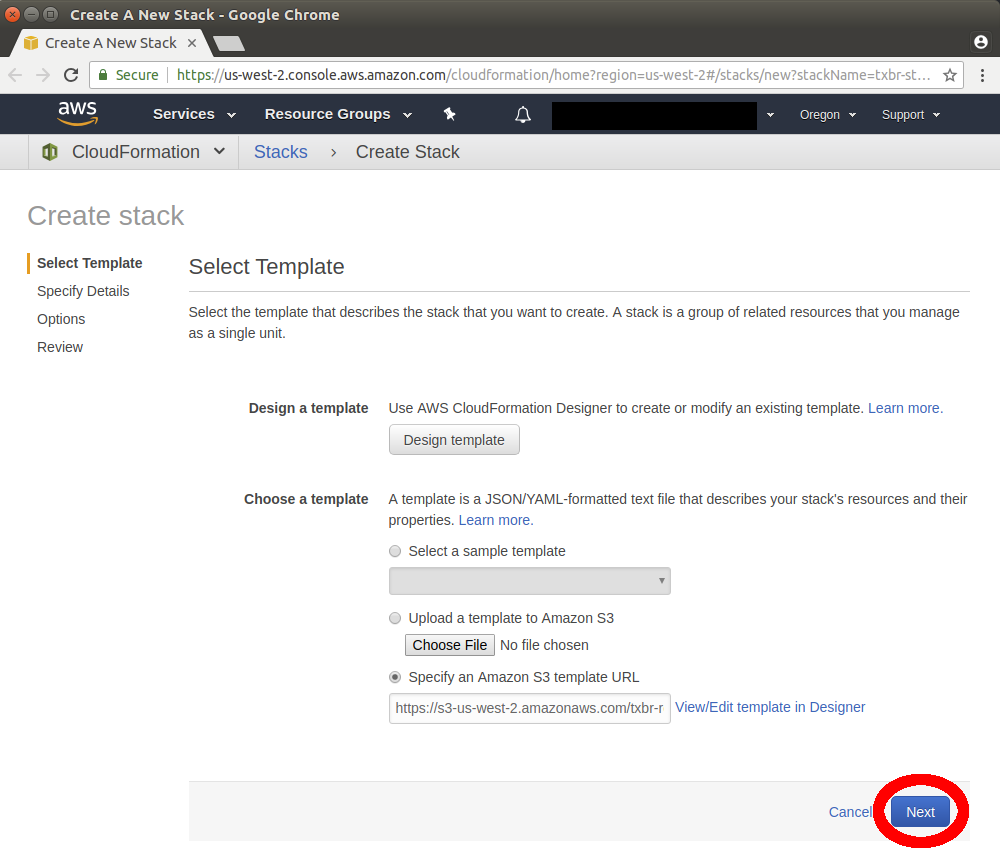
After clicking Next a page similiar to the one below will be displayed.
This page lets one configure details about the CloudFormation stack. Information about the fields are below this figure.
When satisfied with configuration click Next circled in red.
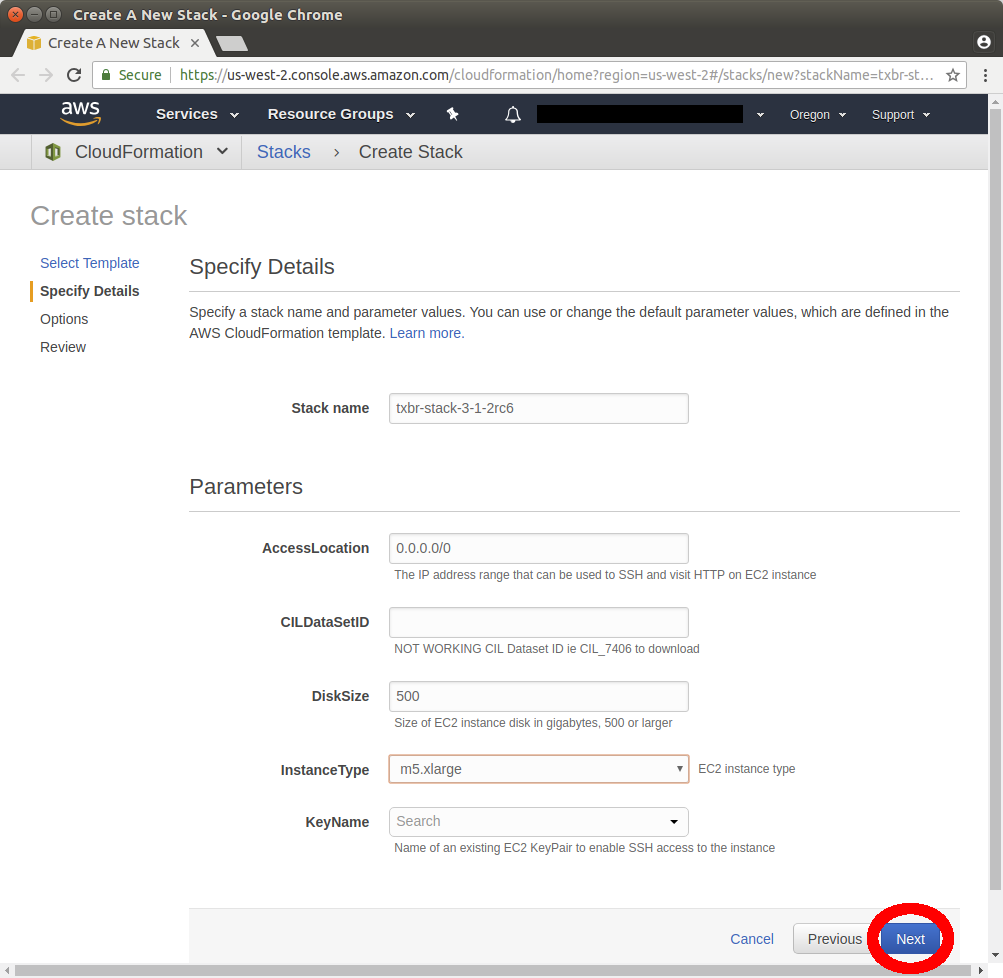

- This field sets the name of the stack. By default TxBR CloudFormation template uses the name txbr-stack-VERSION, but can be customized if desired.
NOTE: Duplicate stack names are NOT allowed so multiple launches will require adjustment of this field.

- In the future this field will accept an id from the [Cell Image Library][cil] and download that dataset to the instance as the machine boots up. NOT WORKING YET!!!

- This field sets the size of the disk on the EC2 instance to spin up. The default is 500 gigabytes and max value is 2000 since that is the largest a boot disk partition can be made.


- Sets ssh Keypair to add to the EC2 instance that will be spun up. This field is a dropdown listing Keypairs already setup with AWS account. This must be set otherwise it will NOT be possible to ssh into the machine. Click here for more information on AWS EC2 Keypairs

- Sets what IPV4 ip addresses are allowed to access EC2 instance. This field expecs an IPV4 Cidr. The default value of 0.0.0.0/0 allows access from everywhere and is NOT recommended. It is probably better to set the ip address to the address of your machine. Sites like (https://www.whatismyip.com/) can get retrieve your ip address and the cidr notation for single address is just the address with /32 added to the end.
When satisfied with configuration click Next
This next page offers more configuration options, but these can be skipped. Just scroll down and click Next which circled in red in the figure below to review the stack configuration:
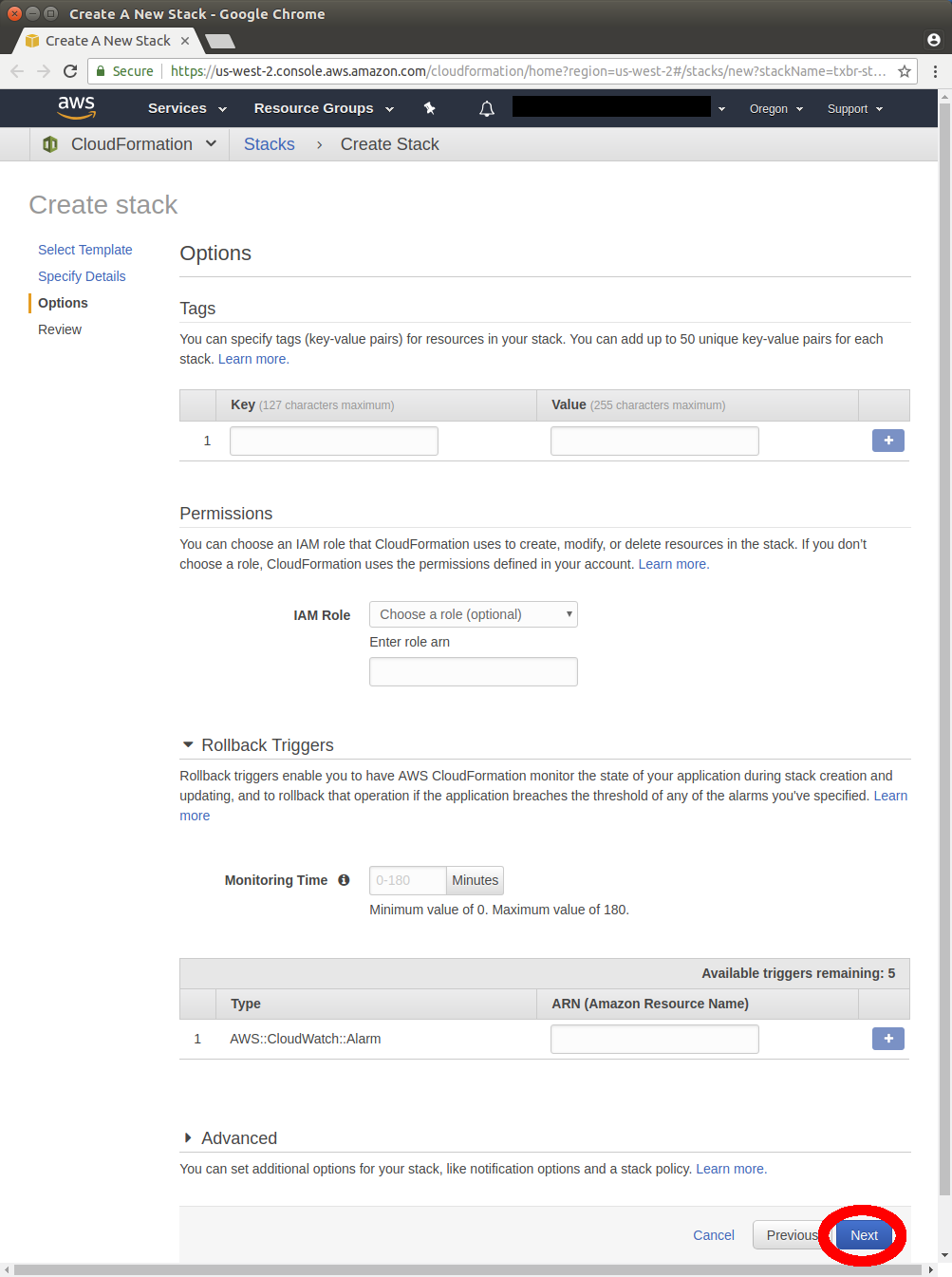
This next page (as shown below in figure) lets one review the configuration of the stack to be created. If satisfied click Create (circled in red below):
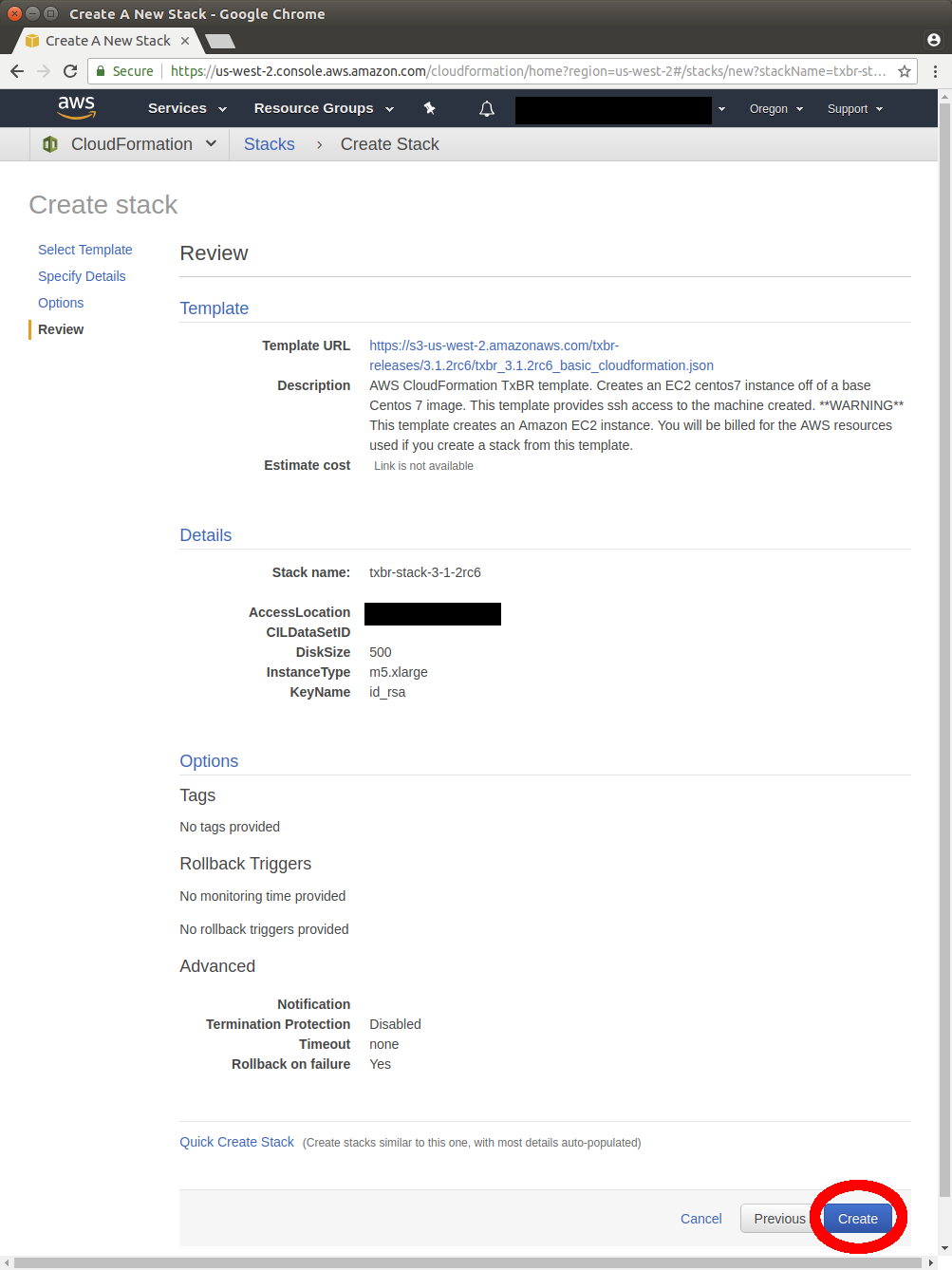
After creating the stack from the previous step. The next page displayed will look like the figure below. Click the refresh icon circled in red.
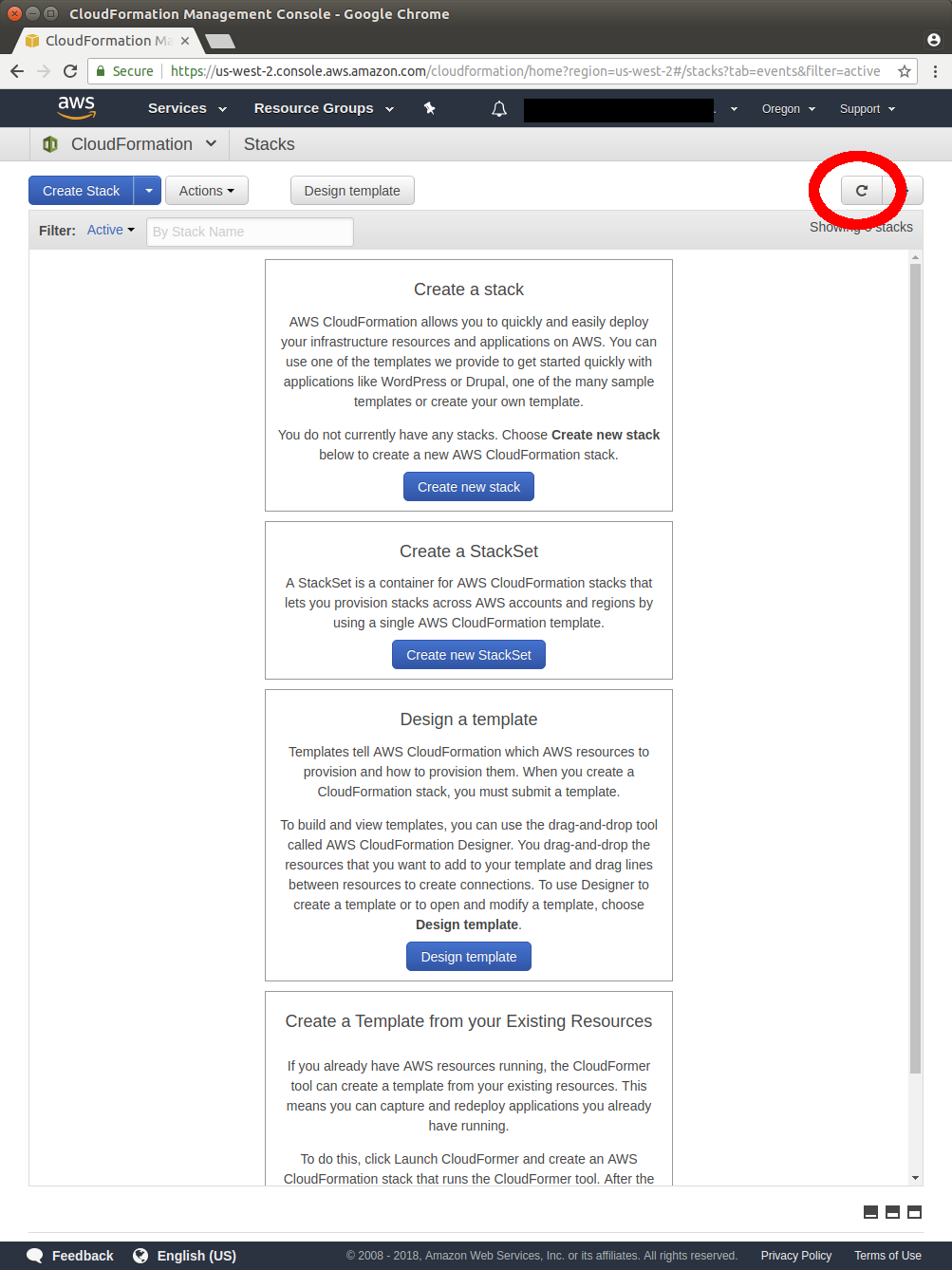
After clicking on the refresh icon the view should change to a table and a row should show the created CloudFormation like the following figure:
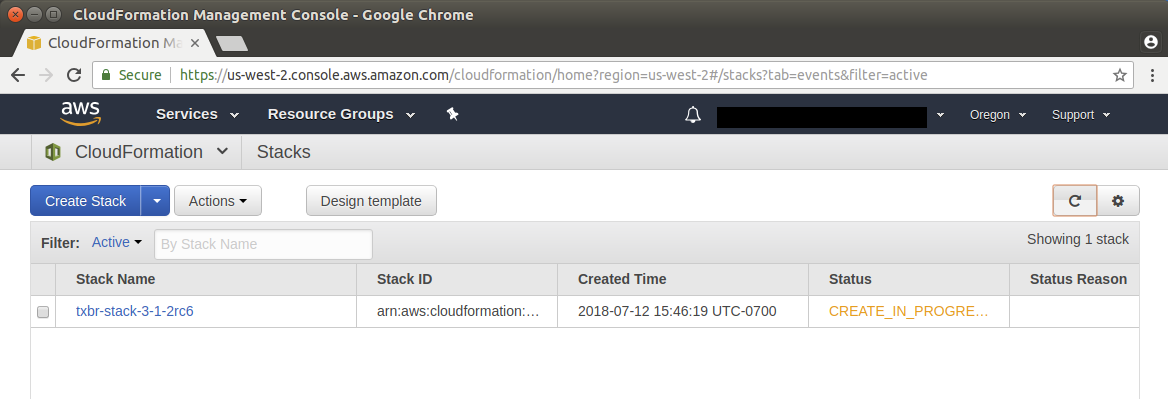
To get detailed views of information about the stack being created click in two locations circled in red. Once in the row with the stack (NOT on stack name since that will take you to a detailed view) and once on the icon to bring up the lower detail panel.
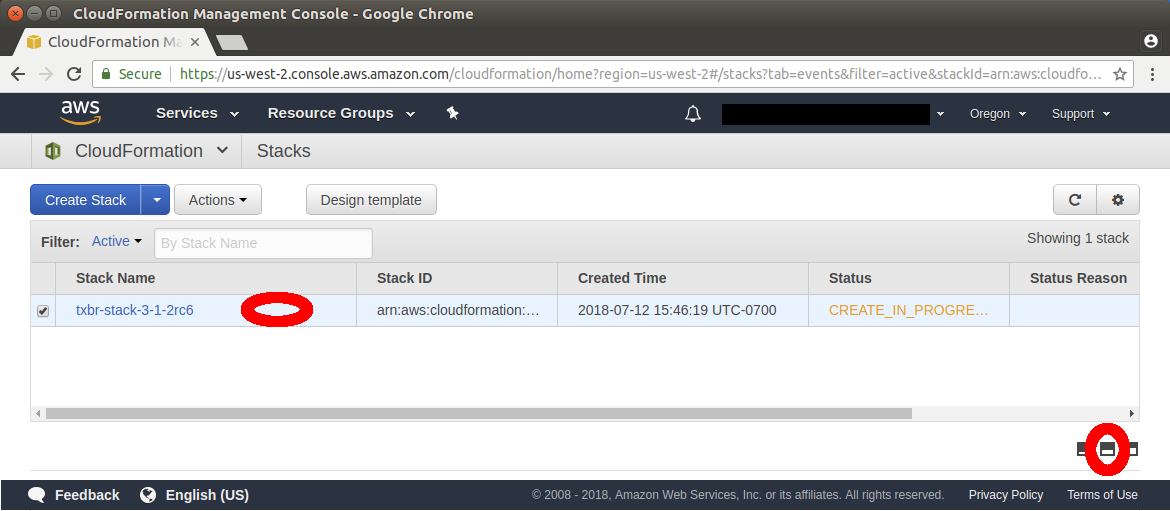
When status for CloudFormation stack is green and says CREATE_COMPLETED (Could take 10 minutes) click on tab circled in red and select Outputs
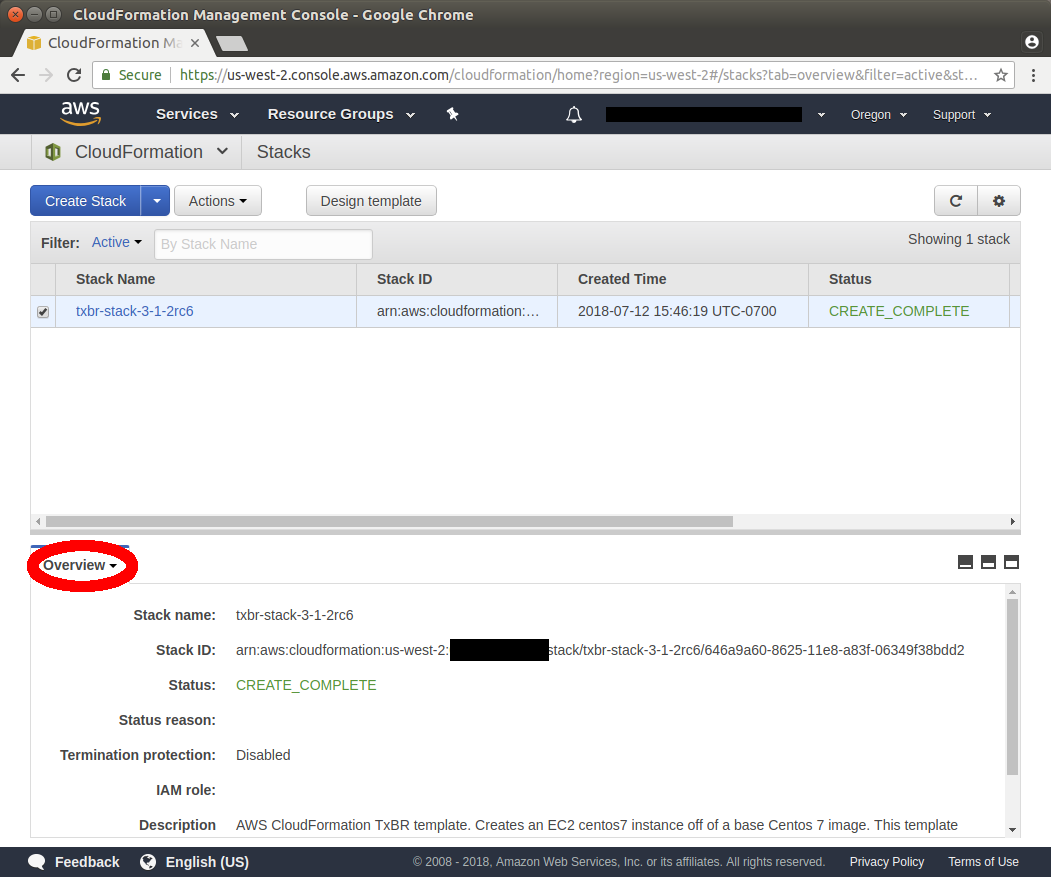
Note the ip address circled in red. This will appear and be available once the CloudFormation stack has completed.
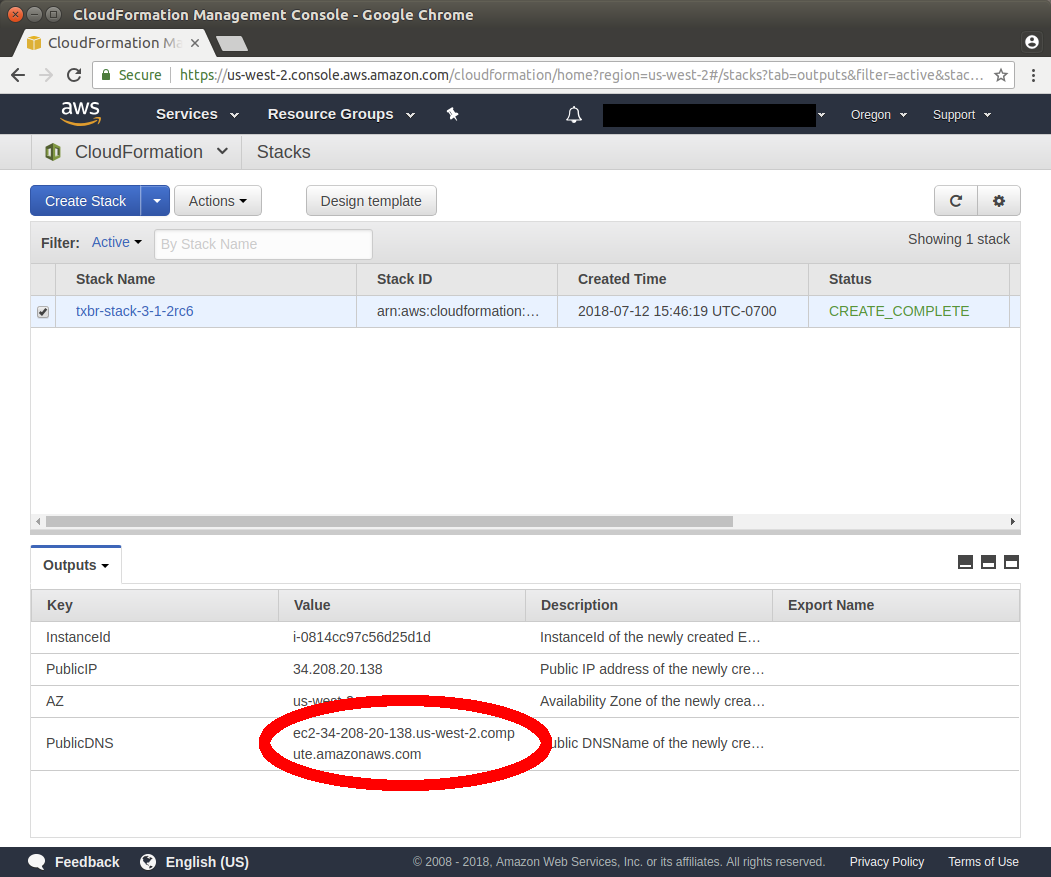
Demorun 1 Running TxBR on flock house virus dataset
WARNING: Until this operation described below is done AWS charges will continue to acrue
Click here for instructions on how to shutdown/delete CloudFormation stack created above
